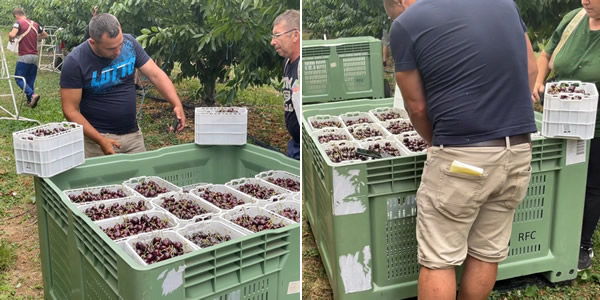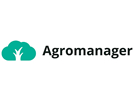Laurens Tack is the founder of the Belgian company, Agromanager. A few years ago, he began developing an online tool. He wanted growers to be able to link all their administration in a single system.
This system won him the 2018 Innovation Campaign. Recently, he added a new module – harvest registration. This registration model lets growers see not only how much each laborer has picked but also where it was picked and what the total harvest yield is. “Every farm is different. The system must fit the grower’s working method. That’s why we develop different methods for measuring harvest performance,” says Laurens.

Methode 1: specifically for small fruits
“The harvest recording method is actually very simple.” Take cherry cultivation – all you need is a smartphone and a roll of personalized barcodes for each worker. As soon as an employee’s cherry container is full, they attach a unique sticker to it. That container’s handed to the supervisor, who scans the barcode. The container’s then placed in a crate or on a pallet.
The system registers that the relevant employee has picked a container. Once the pallet’s full, its label is scanned. And the grower can immediately see that a pallet of cherries has been picked. As well as who did it and where they were working. And how many kg per hour each laborer picked.
Methode 2: for top fruit
This is a different method. It can be used in the top fruit sector. Instead of stickers, each worker gets a barcode that’s scanned into a group. When a crate’s full, a label is attached to it. The person responsible scans that label and links it to the relevant group. It’s then clear which group picked which crate and how quickly they did so. The system also records the harvest volume.
And its GPS tracker shows on which plot the picking took place. That means you can also take other factors into account. For example, employees logically spend more time harvesting tall trees than those where they don’t need ladders. Their kg yields will, therefore, be lower too. “You can distinguish that in the system. You can’t compare apples and pears,” explains Laurens.

Why record harvests?
Farmers can now measure each laborer’s productivity. However, the system also gives an immediate overview of the crop volume. So, growers can make definite agreements with chain partners based on these volumes. The system also records each plot’s yield. That allows growers to determine which part of the land is more or less fertile. Based on that, they can, say, adjust how much fertilizer they use.
Precision cultivation
Besides developing harvest registration methods, Agromanager also focuses on precision. In precision cultivation, farmers use technology to improve the production/input ratio. So the volumes of cherries vs. the orchard, water, fertilizer, pesticides, etc. They use technological tools like sensors to map the farm’s needs. That allows for targeted intervention to maximize yield and minimize waste.
“Currently, recording is mainly at crop level. But we want to move away from that. We want to develop a precision cultivation system. In that system, the data for each tree is recorded separately in Agromanager. That means that all characteristics (soil, variety, diseases, etc.) and treatments (amount of fertilization, use of pesticides, etc.) aren’t recorded at crop level. But ‘more accurately’, so growers have the information they need to optimize their harvest,” concludes Laurens.
 For more information:
For more information:
Laurens Tack
Agromanager
Tel: +32 (0) 330 39 528
Email: laurens@agromanager.eu
Website: www.agromanager.eu


